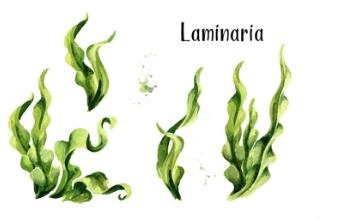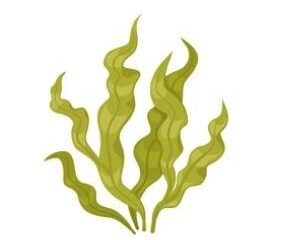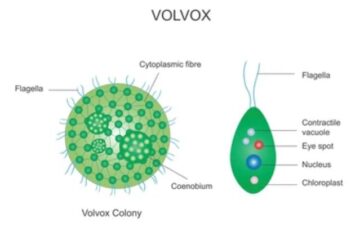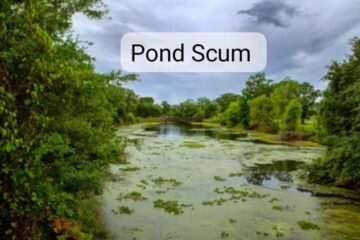Introduction
Amidst the enchanting depths of the ocean, where the sun’s gentle rays only faintly reach, lies a world of extraordinary beauty and mystery. In this hidden realm, one discovers the mesmerizing presence of Lamineria, a truly unique and captivating aquatic wonder. With an allure reminiscent of an artist’s delicate brushstrokes on an ever-changing canvas, Lamineria enchants all who venture into its realm, weaving tales of resilience and grace. Like an elusive dancer, it gracefully sways with the ocean’s rhythm, revealing its intricate structure and unexpected secrets to those who dare to explore its depths. In this introduction, we embark on a journey to unravel the captivating story of Lamineria, a marine treasure that challenges our understanding of the wonders that lie beneath the waves.
What is lamineria?
Lamineria is a genus of large, brown seaweeds that belong to the family Laminariaceae. These seaweeds are commonly known as kelp or tangle and are primarily found in cold, nutrient-rich waters along rocky coastlines in temperate regions around the world.
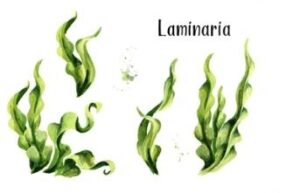
Lamineria species are characterized by their long, ribbon-like blades that can grow to impressive lengths, often forming extensive underwater forests known as kelp forests. The blades attach to the seafloor with a holdfast and extend upward towards the water’s surface, where they form floating canopies.
These underwater ecosystems play a crucial role in marine environments as they provide habitat and food for a wide variety of marine organisms. They also contribute significantly to coastal ecosystems by helping to protect shorelines from erosion and acting as carbon sinks, absorbing and storing large amounts of carbon dioxide from the atmosphere.
Lamineria and other kelp species are ecologically vital, supporting marine biodiversity and playing a role in the overall health of marine ecosystems. They have also been utilized by humans for various purposes, including food sources, fertilizers, and industrial applications. However, like many marine species, Lamineria faces threats from climate change, pollution, and overharvesting, highlighting the importance of conservation efforts to preserve these remarkable seaweeds and the ecosystems they support.
Definition
Lamineria is a genus of large, brown seaweeds, also known as kelp, found in cold, nutrient-rich waters. With long ribbon-like blades, they form underwater forests and crucial ecosystems, supporting marine biodiversity and serving as carbon sinks. Threatened by climate change and human impact, conservation efforts are vital for their preservation.
Taxonomy and classification
Taxonomy and Classification of Lamineria:
Lamineria is a genus of large, brown seaweeds belonging to the family Laminariaceae, within the order Laminariales. These marine algae are commonly known as kelp or tangle and are found in temperate regions worldwide, thriving in cold, nutrient-rich waters along rocky coastlines.
The taxonomic hierarchy of Lamineria is as follows:
Kingdom: Plantae
Phylum: Ochrophyta (or Heterokontophyta)
Class: Phaeophyceae (brown algae)
Order: Laminariales
Family: Laminariaceae
Genus: Laminaria
Key Features and Morphology:
Lamineria species are characterized by their elongated, ribbon-like blades, which can grow to impressive lengths, sometimes reaching several meters. These blades are attached to the seafloor by a holdfast, a root-like structure that anchors the algae to rocks or other substrates. From the holdfast, the blades extend upward towards the water’s surface, forming a floating canopy that can create underwater forests known as kelp forests.
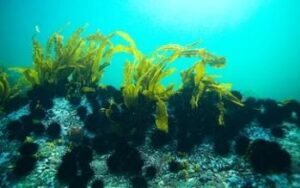
The blades of Lamineria are typically brown in color due to the presence of brown pigments, notably fucoxanthin, which help them absorb sunlight for photosynthesis. Within the blades, specialized structures called pneumatocysts or air bladders can be found. Pneumatocysts contain gases that provide buoyancy, allowing the blades to remain upright and closer to the water’s surface, where they can access sunlight more effectively.
Reproduction and Life Cycle:
Lamineria reproduces both sexually and asexually. Asexual reproduction occurs through fragmentation, where pieces of the blade can break off and develop into new individuals. Sexual reproduction involves the formation of reproductive structures known as sporophylls, which produce and release spores. The released spores disperse in the water and develop into male and female gametophytes. These gametophytes then produce male and female gametes, which fuse to form zygotes. The zygotes develop into new sporophytes, completing the life cycle.
Ecological Importance:
Lamineria and other kelp species play a crucial role in marine ecosystems. Kelp forests serve as vital habitat and feeding grounds for a wide range of marine organisms, including fish, invertebrates, and marine mammals. These underwater forests also act as nursery areas for various species, providing protection for juvenile organisms. Additionally, kelp forests help to improve water quality by filtering and absorbing nutrients, and they play a significant role in carbon sequestration, effectively removing carbon dioxide from the atmosphere and storing it in their tissues.
Conservation Status and Threats:
Lamineria species, like many marine organisms, face various threats to their survival. Human activities such as coastal development, pollution, and overharvesting can disrupt kelp ecosystems. Climate change, particularly rising sea temperatures and ocean acidification, can also pose significant challenges to Lamineria populations. Because of these threats, several Lamineria species have become vulnerable or endangered, highlighting the importance of conservation efforts to protect these ecologically significant seaweeds and the marine environments they support.
In conclusion, Lamineria is a fascinating genus of brown seaweeds with an essential role in marine ecosystems. Understanding its taxonomy, classification, and ecological significance is crucial for promoting conservation and sustainable management of these valuable underwater forests.
Morphology and anatomy
Lamineria, the majestic brown seaweeds commonly known as kelp or tangle, possess a captivating morphology and intricate anatomy that make them true giants of the underwater world. In this article, we delve into the remarkable features that define Lamineria’s appearance and structure, shedding light on the fascinating secrets of their underwater presence.
- Elongated Blades: Reaching for the Sunlight
One of the most striking features of Lamineria is its elongated blades that stretch from the seafloor towards the water’s surface. These ribbon-like blades can grow to impressive lengths, sometimes reaching several meters. The elongated shape allows Lamineria to maximize its exposure to sunlight, a crucial factor for efficient photosynthesis in the dimly lit underwater world.
- Holdfast: Firm Anchors in the Turbulent Waters
Beneath the waves, Lamineria’s holdfast emerges as a root-like structure that firmly anchors these seaweeds to rocks or other substrates on the seafloor. The holdfast provides stability in the face of strong ocean currents, ensuring that Lamineria remains steadfast within the underwater forests known as kelp forests.
- Pneumatocysts: Buoyancy and Upright Growth
Lamineria’ s blades are accompanied by specialized structures known as nematocysts or air bladders. These gas-filled sacs provide buoyancy, allowing the blades to remain upright and closer to the water’s surface. By adjusting the gas content within the nematocysts, Lamineria can regulate its position within the water column, ensuring optimal exposure to sunlight and nutrients.
- Lamellae: Increasing Surface Area for Nutrient Absorption
Lamineria’ s blades feature numerous tiny structures called lamellae, which increase the surface area available for nutrient absorption. These lamellae are lined with specialized cells containing mucilage, a sticky substance that can trap and absorb nutrients from the surrounding water. This adaptation allows Lamineria to thrive in nutrient-poor environments, maximizing its nutrient intake and supporting rapid growth.
- Blade Structure and Pigments: Capturing the Sun’s Energy
The blades of Lamineria are typically brown in color due to the presence of specialized pigments, notably fucoxanthin. These brown pigments enhance light absorption, enabling Lamineria to efficiently harvest the limited sunlight available in the depths for photosynthesis.
- Reproductive Structures: Propagating New L
Lamineria exhibits both sexual and asexual reproduction. Sexual reproduction involves the formation of specialized structures called sporophylls on mature blades. Within these sporophylls, tiny, single-celled structures called spores develop. Asexual reproduction occurs through fragmentation, where portions of the blades break away, establishing themselves as new individuals.
- Adaptations to Environmental Challenges
Lamineria has evolved adaptations to cope with various environmental challenges, including temperature fluctuations, salinity changes, and exposure to waves and currents. Their ability to withstand these challenges contributes to their resilience and survival in diverse marine habitats.
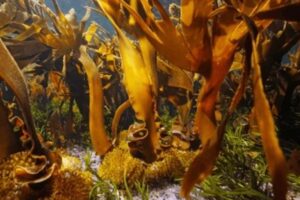
Habitat and distribution
Habitat
Lamineria, commonly known as kelp or tangle, thrives in temperate regions around the world. These remarkable brown seaweeds are well-adapted to the challenging and dynamic marine environment. Their preferred habitats are found in cold, nutrient-rich waters along rocky coastlines, where they create vast and intricate underwater forests known as kelp forests.
Kelp forests are characterized by Lamineria’ s elongated blades, which extend from the seafloor towards the water’s surface, forming a floating canopy. The complex structure of kelp forests provides an array of microhabitats, offering protection and shelter for a diverse range of marine organisms. This makes kelp forests biodiversity hotspots, supporting an abundance of marine life and contributing to the overall health and balance of marine ecosystems.
Distribution
Lamineria exhibits a wide global distribution, thriving in temperate regions of both the Northern and Southern Hemispheres. Notable areas where Lamineria can be found include:
- North Atlantic: Lamineria species can be found along the western coasts of Europe, including the British Isles and Scandinavia. They are also present along the eastern coasts of North America, from Canada down to the northeastern United States.
- North Pacific: Lamineria is abundant along the western coasts of North America, from Alaska to California. It is also found along the eastern coasts of Asia, including Japan and the Russian Far East.
- Southern Hemisphere:In the Southern Hemisphere, Lamineria can be found in regions such as southern Australia, New Zealand, and the southern coasts of South America, including Chile and Argentina.
Lamineria’ s distribution is greatly influenced by ocean currents, which aid in the dispersal of spores and fragments. These currents play a vital role in spreading Lamineria to new areas and facilitating the colonization of suitable habitats.
Challenges and Conservation:
Despite their wide distribution, Lamineria faces various threats to their survival. Coastal development, pollution, and climate change are significant challenges that impact kelp forests and their associated marine ecosystems. Rising sea temperatures and ocean acidification can disrupt the delicate balance within kelp forests, affecting the growth and distribution of Lamineria populations.
Conservation efforts are crucial to protect and preserve the invaluable habitat and distribution of Lamineria. Sustainable management practices, marine protected areas, and efforts to mitigate climate change are essential to safeguarding these vital underwater ecosystems and the biodiversity they support.
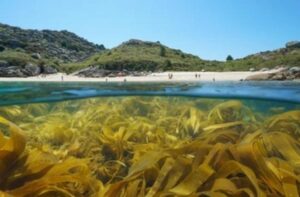
Ecological importance
Lamineria, the majestic brown seaweeds commonly known as kelp or tangle, hold significant ecological importance within marine ecosystems. From providing vital habitat and shelter to supporting marine biodiversity, Lamineria plays a central role in maintaining the delicate balance of our oceans. Let’s explore the multifaceted ecological contributions of these underwater giants.
- Habitat and Biodiversity:
Lamineria’ s vast underwater forests, known as kelp forests, create diverse and intricate habitats for countless marine organisms. These forests serve as refuge and nursery grounds for a wide range of species, including fish, invertebrates, and marine mammals. The complex structure of kelp forests provides shelter from predators and enhances food availability, fostering rich biodiversity and supporting species interactions crucial for ecosystem stability.
- Food Web Support:
As primary producers, Lamineria participates at the base of marine food webs. Through photosynthesis, they convert sunlight and carbon dioxide into organic matter, providing a significant food source for herbivorous marine organisms. The energy and nutrients transferred from Lamineria to higher trophic levels support the entire food web, including predatory fish and marine mammals, ensuring a thriving ecosystem.
- Carbon Sequestration:
Lamineria acts as a vital carbon sink, absorbing substantial amounts of carbon dioxide (CO2) from the surrounding seawater during photosynthesis. By converting CO2 into biomass, they play a crucial role in mitigating climate change. The sequestered carbon is stored in their tissues and remains in the ocean even after their death, making Lamineria a significant player in climate resilience.
- Nutrient Cycling and Water Quality:
Lamineria is essential for nutrient cycling in marine ecosystems. As they absorb nutrients from the surrounding water, they concentrate these elements within their tissues. When kelp decomposes, the released nutrients enrich the water, benefiting other marine organisms. Additionally, kelp forests act as natural filters, improving water quality by absorbing excess nutrients and pollutants, thus contributing to a healthier marine environment.
- Coastal Protection and Erosion Control:
Kelp forests, anchored by Lamineria’s holdfasts, provide natural protection against coastal erosion. The extensive root-like structures of Lamineria stabilize the seafloor, reducing the impact of waves and currents on shorelines. By preventing erosion and protecting coastal habitats, Lamineria plays a crucial role in maintaining the stability and resilience of coastal ecosystems.
- Climate Resilience and Adaptation:
Lamineria’s ability to withstand environmental changes and disturbances makes them invaluable indicators of ecosystem health and climate conditions. Their resilience and adaptation to varying ocean conditions offer insights into broader ecosystem dynamics, which helps scientists and conservationists understand climate resilience in marine environments.
Adaptation to marine environment
Lamineria, the enchanting brown seaweeds known as kelp or tangle, have evolved a plethora of fascinating adaptations to thrive in the challenging and dynamic marine environment. From their attachment mechanisms to specialized structures for nutrient absorption, Lamineria’s adaptations are a testament to their resilience and ability to flourish beneath the waves. In this article, we explore the unique and ingenious ways Lamineria has adapted to the ever-changing conditions of the ocean.
- Holdfast: Anchors of Stability:
At the very foundation of Lamineria’s survival lies its holdfast – a root-like structure that anchors these giant seaweeds to rocks and other substrates on the seafloor. The holdfast provides stability in the face of strong ocean currents, safeguarding Lamineria from being swept away and ensuring their steadfast presence within kelp forests.
- Elongated Blades: Reaching for Light:
Lamineria’s elongated blades are a testament to their quest for sunlight. In the dimly lit underwater world, these blades extend upward, stretching towards the water’s surface to maximize their exposure to vital sunlight for photosynthesis. This adaptation enables Lamineria to harness the limited light available in the depths, making them one of the most efficient photosynthesizers among marine organisms.
- Pneumatocysts: Buoyancy for Upright Growth:
The gas-filled pneumatocysts found along Lamineria’s blades are a masterful adaptation for buoyancy control. These sacs of gas allow the blades to remain upright and closer to the water’s surface, where sunlight is abundant. By adjusting the gas content within the pneumatocysts, Lamineria can regulate its position within the water column, ensuring optimal exposure to sunlight and nutrients.
- Lamellae: Increasing Nutrient Absorption:
Lamineria’s blades feature numerous tiny structures called lamellae, which increase the surface area for nutrient uptake. These lamellae are lined with specialized cells that contain mucilage, a sticky substance that can trap and absorb nutrients from the surrounding water. This adaptation allows Lamineria to thrive in nutrient-poor environments, maximizing its nutrient intake and growth.
- Reproductive Strategies: Ensuring Succession:
Lamineria exhibits both sexual and asexual reproduction, providing a diverse array of strategies to ensure the continuation of their species. Asexual reproduction through fragmentation allows for rapid propagation and colonization of new areas, while sexual reproduction through spore release and fertilization promotes genetic diversity and adaptation to changing environmental conditions.
- Resistance to Oceanic Challenges:
Lamineria has also developed resistance to various oceanic challenges, such as fluctuations in temperature and salinity. Their ability to withstand these changes and adapt to varying conditions is vital for their survival in the ever-changing marine environment.
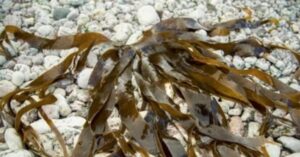
Reproduction and lifecycle
The reproduction and life cycle of Lamineria, the magnificent brown seaweeds commonly known as kelp or tangle, encompass a captivating journey of growth, reproduction, and regeneration. This intricate process involves both sexual and asexual reproduction, ensuring the perpetuation of their species and the formation of vast underwater forests known as kelp forests.
- Spore Release: Asexual Reproduction
Lamineria begins its life cycle with a phase of asexual reproduction. As mature blades develop on the adult plant, specialized structures called sporophylls emerge on the blades’ surface. Within these sporophylls, numerous tiny, single-celled structures called spores form.
When the sporophylls mature, they release these countless spores into the surrounding water. These spores are then dispersed by ocean currents, carried far and wide, setting the stage for new life to take root.
- Germination: Spore to Gametophyte
Upon reaching favorable substrates, some of the released spores settle and germinate. The germinated spores undergo mitosis, developing into a haploid life stage known as the gametophyte.
The gametophytes are delicate, filamentous structures that continue to grow and mature within the underwater world. Male and female gametophytes develop simultaneously, laying the groundwork for the next phase of reproduction.
- Gamete Production: Sexual Reproduction
As the gametophytes mature, they begin to produce specialized reproductive cells called gametes. Male gametophytes release numerous male gametes, while female gametophytes produce and release egg cells, also known as female gametes.
This process marks the beginning of sexual reproduction in Lamineria, where the union of male and female gametes is crucial for the formation of the next generation.
- Fertilization: Zygote Formation
As ocean currents disperse the released gametes, a captivating dance of fertilization unfolds in the water. Male gametes encounter and fuse with female gametes, resulting in the formation of zygotes.
These zygotes are the first diploid stage in Lamineria’s life cycle, representing the union of genetic material from both male and female gametophytes.
- Sporophyte Growth and Development
The zygotes grow and develop into young sporophytes, marking the transition from the gametophyte to the sporophyte phase. The sporophytes gradually take on the recognizable appearance of Lamineria’s elongated blades.
As they mature, the young sporophytes continue to grow, eventually becoming full-fledged, adult Lamineria plants.
- Repetition and Regeneration
The adult Lamineria plants perpetuate the life cycle, continuing the captivating process of reproduction. As they grow, they undergo a continuous cycle of asexual and sexual reproduction, releasing spores and forming new sporophytes, ensuring the survival and expansion of kelp forests.
Human uses and threats
Human Uses of Lamineria:
- Food Source: Lamineria, particularly species like Saccharina and Alaria, have been traditionally used as food in various cultures. They are a source of essential nutrients, vitamins, and minerals and have been consumed in soups, salads, and various dishes.
- Alginate Production: Lamineria is a valuable source of alginate, a substance extracted from the cell walls of brown algae. Alginate is widely used in the food industry as a thickening and stabilizing agent and in various industrial applications, including pharmaceuticals and cosmetics.
- Fertilizer and Animal Feed: lamineria is utilized in the production of organic fertilizers and soil conditioners due to its high nutrient content. It is also used as a supplement in animal feed to improve nutrition for livestock.
- Biotechnology and Research: Brown algae, including Lamineria, are valuable subjects for biotechnological research. They are studied for their unique compounds, such as bioactive molecules, which have potential applications in medicine, biofuels, and other industries.
- Aquaculture: Lamineria is cultivated in seaweed farms for various purposes, including food, cosmetics, and pharmaceuticals. Seaweed farming can alleviate pressures on natural Lamineria populations and contribute to sustainable economic activities.
Threats to Lamineria:
- Coastal Development: Urbanization and coastal development can result in habitat loss and degradation for Lamineria. Construction and pollution from human activities may disrupt kelp forests and reduce suitable areas for Lamineria growth.
- Climate Change:Climate change affects marine ecosystems, including kelp forests. Rising sea temperatures, ocean acidification, and changes in ocean currents can impact Lamineria’s growth, reproduction, and distribution.
- Pollution: Pollution from land-based sources, such as agricultural runoff, industrial discharge, and plastics, can negatively affect Lamineria and kelp forest health. Pollutants can reduce water quality and harm marine life, disrupting the delicate balance within the ecosystem.
- Overharvesting: Unsustainable harvesting practices can deplete natural Lamineria populations, leading to declines in kelp forest health and biodiversity. Responsible harvesting and management are crucial to maintain the ecological balance.
- Invasive Species: Some invasive species can outcompete native Lamineria, leading to a reduction in their abundance and distribution. These non-native species may alter the dynamics of kelp forests and impact the biodiversity within these ecosystems.
- Disease and Parasites: Like any other living organism, Lamineria is susceptible to diseases and parasites. Outbreaks of specific pathogens or parasites can affect Lamineria populations and contribute to ecosystem disruptions.
Types
Lamineria is a genus of brown seaweeds, and several species fall under this genus. While there are more than 30 species of Laminaria, here are some common types:
- Laminaria digitate: Also known as Oarweed or Fingered kelp, Laminaria digitata is one of the most widespread kelp species. It has elongated, digitate blades with prominent veins and can grow to several meters in length. This species is found in the North Atlantic Ocean, including the coasts of Europe and North America.
- Laminaria hyperborea: Also called Cuvie, Laminaria hyperborea is another common kelp species found in the North Atlantic Ocean, particularly in the British Isles and Scandinavia. It has large, leathery blades and can form dense underwater forests.
- Laminaria saccharina: Known as Sugar kelp, this species is found in the North Atlantic and North Pacific Oceans. It has thin, leathery blades that are often translucent, and it is valued for its culinary uses and alginate content.
- Laminaria ochroleuca: Commonly known as Golden kelp, Laminaria ochroleuca is found in the northeastern Atlantic Ocean, from the British Isles to the Mediterranean Sea. It has thick, golden-brown blades and is an important component of kelp forests in its range.
- Laminaria longicruris: This species is found in the Southern Hemisphere, particularly in the southern coasts of South America, including Chile and Argentina. It has long, strap-like blades and contributes to the formation of kelp forests in the region.
- Laminaria japonica: lamineria japonica Also known as Japanese kelp or Kombu, this species is native to the North Pacific Ocean, including Japan, Korea, and parts of Russia and China. It is commercially cultivated for food and various industrial uses.
These are just a few examples of the diverse range of Laminaria species found in different regions of the world. Each species has its unique characteristics and ecological significance, contributing to the overall biodiversity and ecological balance of marine ecosystems.
Examples
Apologies for the confusion in my previous response. I made a mistake in listing specific species under the genus Laminaria, which actually belongs to another group of brown algae. Laminaria is not a genus of seaweed, but instead, it belongs to the class Alariophyceae.
To provide you with accurate examples of Laminaria, here are some examples of brown algae species that belong to the Laminariales order, commonly known as kelps or kelp-like seaweeds:
- Macrocystis pyrifera: Also known as Giant kelp, Macrocystis pyrifera is one of the largest and fastest-growing seaweeds on Earth. It forms extensive underwater forests in the Pacific Ocean, particularly along the western coasts of North and South America.
- Nereocystis luetkeana: Commonly called Bull kelp, Nereocystis luetkeana is another large kelp species found along the coasts of the North Pacific Ocean, including Alaska, British Columbia, and California. It has a distinctive bulbous float, known as a pneumatocyst, at the top of its long, ribbon-like blades.
- Ecklonia radiata: This species, also known as Sea kelp or Australian kelp, is found in the temperate waters of Australia, New Zealand, and other parts of the southwestern Pacific Ocean. It forms extensive underwater forests and provides essential habitat for marine life.
- Laminaria hyperborea: As mentioned earlier, Laminaria hyperborea is a species of kelp commonly found in the North Atlantic Ocean, particularly in the British Isles and Scandinavia. It is a significant component of kelp forests in its range.
- Saccharina latissima: Also called Sugar kelp or Sea Belt, Saccharina latissima is a brown alga found in the North Atlantic and North Pacific Oceans. It is highly valued for its culinary uses and is rich in nutrients and minerals.
These examples represent some of the key species of kelps or kelp-like seaweeds belonging to the Laminariales order. Each of these species plays a crucial role in marine ecosystems, providing habitat, food, and essential ecological services for a diverse range of marine organisms.
Conclusion
In conclusion, Lamineria, the enchanting brown seaweeds known as kelp or tangle, hold a significant place in the marine world. Their elongated blades, anchored by holdfasts, reach for sunlight and create vast underwater forests known as kelp forests. Lamineria’s remarkable adaptations allow them to thrive in the dynamic marine environment, supporting biodiversity and contributing to ecological balance.
Their reproductive strategies involve both sexual and asexual processes, leading to a captivating dance of life beneath the waves. Lamineria’s life cycle, from spore release to the formation of new sporophytes, represents the perpetuation of their species and the regeneration of kelp forests.
Lamineria’s ecological importance cannot be overstated. They provide essential habitat and shelter for numerous marine organisms, acting as primary producers in marine food webs and serving as carbon sinks, helping to mitigate climate change. Furthermore, they improve water quality, protect coastlines from erosion, and offer potential applications in biotechnology and other industries.
However, Lamineria faces various threats, including habitat loss, climate change, pollution, overharvesting, invasive species, and disease. To preserve these underwater giants and their ecological contributions, conservation efforts are crucial. By protecting kelp forests, implementing sustainable practices, reducing pollution, and mitigating climate change, we can ensure the continued existence and resilience of Lamineria and the health of marine ecosystems.
Understanding and appreciating the wonder of Lamineria enriches our appreciation for the intricacies of marine life and highlights the importance of stewardship in preserving the delicate balance of our oceans. As we continue to explore and conserve the mysteries of the ocean, cherishing and protecting Lamineria will contribute to the preservation of marine biodiversity, ensuring the flourishing of these underwater marvels for generations to come.
Questions / Answers
Q: What is Lamineria, and what is its common name?
A: Lamineria is a genus of brown seaweeds commonly known as kelp or tangle.
Q: How does Lamineria anchor itself to the seafloor?
A: Lamineria attaches itself to the seafloor using a root-like structure called a holdfast.
Q: What is the ecological significance of Lamineria in marine ecosystems?
A: Lamineria plays a crucial role in marine ecosystems by providing habitat and shelter for marine organisms, acting as primary producers in food webs, and contributing to carbon sequestration.
Q: How does Lamineria obtain nutrients in nutrient-poor environments?
A: Lamineria’s blades feature specialized structures called lamellae that increase the surface area for nutrient absorption. The cells in these lamellae contain mucilage, a sticky substance that traps and absorbs nutrients from the surrounding water.
Q: What are some human uses of Lamineria?
A: Lamineria is used as a food source in some cultures, as a source of alginate in the food industry, and for fertilizer and animal feed production.
Q: What are the threats to Lamineria and kelp forests?
A: Lamineria and kelp forests face threats such as habitat loss due to coastal development, climate change, pollution, overharvesting, invasion by non-native species, and disease.
Q: How does Lamineria contribute to carbon sequestration?
A: Lamineria absorbs carbon dioxide during photosynthesis and stores the carbon in its tissues, acting as a carbon sink.
Q: What are some conservation strategies to protect Lamineria and kelp forests?
A: Conservation strategies include establishing marine protected areas, implementing sustainable harvesting practices, reducing pollution, mitigating climate change, and restoring degraded kelp habitats.
Q: How does Lamineria reproduce, and what is its life cycle like?
A: Lamineria reproduces through both sexual and asexual processes. Spores are released through asexual reproduction, germinate into gametophytes, and eventually form new sporophytes through sexual reproduction.
Q: What is the distribution of Lamineria worldwide?
A: Lamineria is found in temperate regions of both the Northern and Southern Hemispheres, with species present in the North Atlantic, North Pacific, and the Southern Hemisphere coasts.
Q: How do Lamineria’s adaptations allow it to thrive in the marine environment?
A: Lamineria’s adaptations, such as its holdfast for anchoring, elongated blades for sunlight exposure, and pneumatocysts for buoyancy control, enable it to withstand oceanic challenges and flourish in the ever-changing marine environment.

